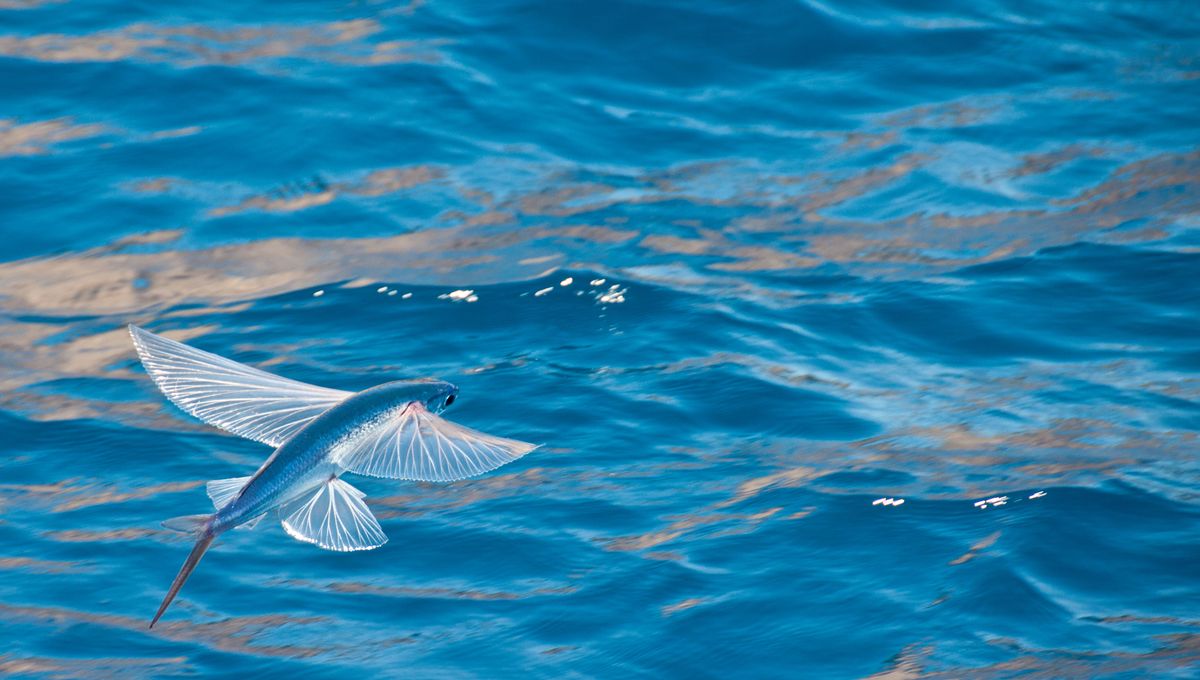
There are around 64 species of fish in the family Exocoetidae, colloquially referred to as “flying fish”. These saltwater fish are found in large numbers across the Atlantic, Pacific, and Indian Oceans. In short, no, flying fish do not technically possess the ability for powered flight. What they have instead is the sophisticated ability to glide out of the water and maneuver their way across vast distances, transported by just wind and ocean currents.
Inhabiting the epipelagic zone, or sunlight zone, these fish spend their lives in the top 200 meters (656 feet) of the water – and for good reason. Their strong spinal columns are attached to an ossified caudal fin, giving them the sturdy and streamlined characteristics needed to project themselves straight out of the water.
Broadened neural arches strengthen the structure between the fish’s spinal column and skull. This increased rigidity stabilizes them in flight, increasing their speed and allowing for better aim when changing directions mid-air.
Two large extendable fins form the “wings”. When swimming, these lay flat against the fish’s body to make it more hydrodynamic in the water. Some species, referred to as “four-winged flying fish”, have the addition of winglike pelvic fins to aid in their airborne maneuverability.
These impressive athletes are able to spring out of the water at high speeds, reaching 59 kilometers (37 miles) per hour. While they will typically glide for around 50 meters (160 feet), their clever utilization of water currents and updrafts enables them to travel distances of up to 400 meters (1,300 feet). The longest flight time for these scaley gliders was recorded by a film crew off the coast of Japan in 2008 and lasted an impressive 45 seconds, with the fish gliding at about 30 kilometers (19 miles) per hour.
It’s thought that flying fish developed this unique adaptation to avoid predation from the large fish and cetaceans they share their home with. Unfortunately for them, life outside the ocean isn’t any kinder, as they added themselves to the menu of a variety of sea birds.
Their average 1.2-meter (4-foot) altitude – sometimes reaching an impressive 6 meters (20 feet) – also lands them in trouble with humans, as they regularly find themselves launched onboard passing boats. This quirky tendency earned them the family name “Exocoetidae”, a Latin translation of the Greek term for “sleeping outside”.
Source Link: Do Flying Fish Really Fly?